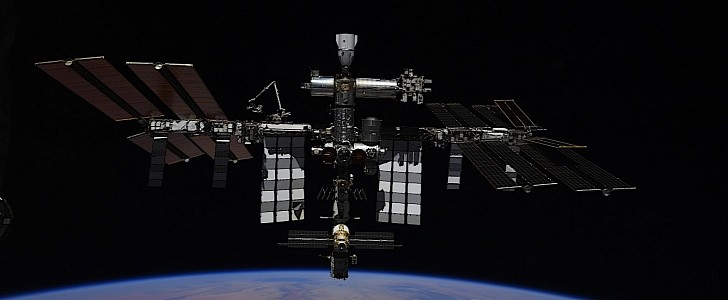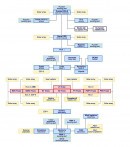No, the following piece is not about time-traveling American rockets, but about the dangers, real and ever-increasing, of space junk. Oh, and it involves the International Space Station (ISS), again.
In orbit for over two peaceful decades, the ISS has had quite an adventurous ride this year, as it had to perform maneuvers it doesn’t usually perform and ride out dangerous situations it doesn’t usually encounter.
Presently occupied by a mix of nationalities, but mostly American and Russians, the ISS was endangered this year three times by the latter group, on two occasions on account of malfunctions to Russian hardware, and once on account of the country blowing up one of its own satellites, in orbit, by means of direct-ascent missiles.
But as it turns out, it’s not necessarily Russia’s randomly-firing thrusters or things blowing up in space that can endanger the ISS, but also rockets fired by the Americans, well, decades ago.
Back in 1994, America launched Northrop Grumman’s Pegasus rocket from the Edwards Air Force base, carrying with it undisclosed experiments. The flight failed to reach its intended orbit, but remained up there and the breakup of the upper stage of the rocket took place two years later.
Parts of the Pegasus have been floating aimlessly around our planet until one of them, dubbed by NASA Object 39915, found its target yesterday, December 2: the ISS. The American space agency flagged this object as a risk, and was talking about “a possible debris avoidance maneuver.” Which really happened on December 3, according to Russian Roscosmos head Dmitry Rogozin
"Five minutes ago, the ISS avoided a conjunction with the US space debris, the Pegasus carrier rocket remnants," he was quoted as saying by Russian news agency TASS.
The maneuver was conducted by firing the thrusters on the Progress MS-18 cargo ship for a total of 161 seconds. At the time of writing, NASA is yet to comment on the matter.
Presently occupied by a mix of nationalities, but mostly American and Russians, the ISS was endangered this year three times by the latter group, on two occasions on account of malfunctions to Russian hardware, and once on account of the country blowing up one of its own satellites, in orbit, by means of direct-ascent missiles.
But as it turns out, it’s not necessarily Russia’s randomly-firing thrusters or things blowing up in space that can endanger the ISS, but also rockets fired by the Americans, well, decades ago.
Back in 1994, America launched Northrop Grumman’s Pegasus rocket from the Edwards Air Force base, carrying with it undisclosed experiments. The flight failed to reach its intended orbit, but remained up there and the breakup of the upper stage of the rocket took place two years later.
Parts of the Pegasus have been floating aimlessly around our planet until one of them, dubbed by NASA Object 39915, found its target yesterday, December 2: the ISS. The American space agency flagged this object as a risk, and was talking about “a possible debris avoidance maneuver.” Which really happened on December 3, according to Russian Roscosmos head Dmitry Rogozin
"Five minutes ago, the ISS avoided a conjunction with the US space debris, the Pegasus carrier rocket remnants," he was quoted as saying by Russian news agency TASS.
The maneuver was conducted by firing the thrusters on the Progress MS-18 cargo ship for a total of 161 seconds. At the time of writing, NASA is yet to comment on the matter.











